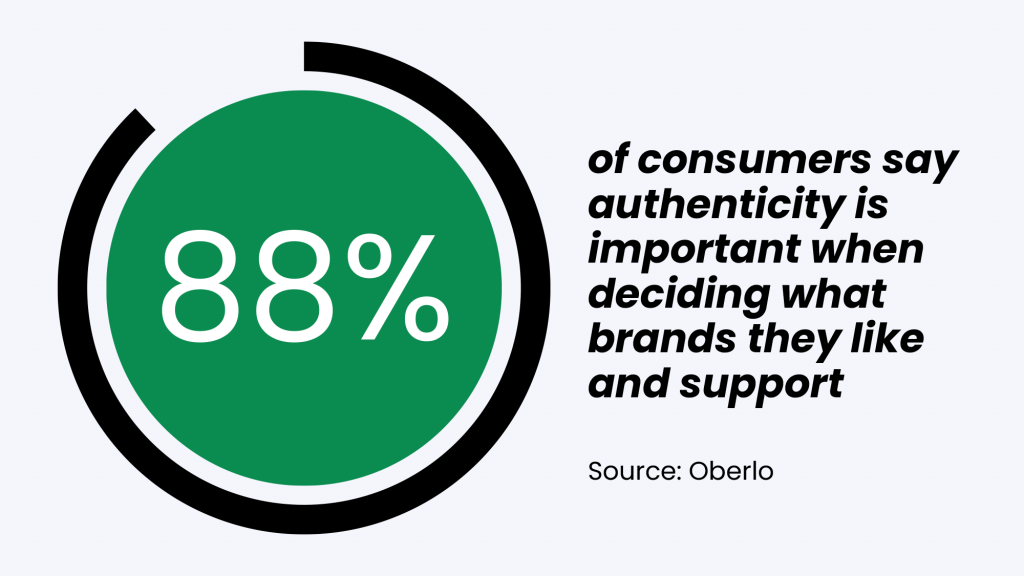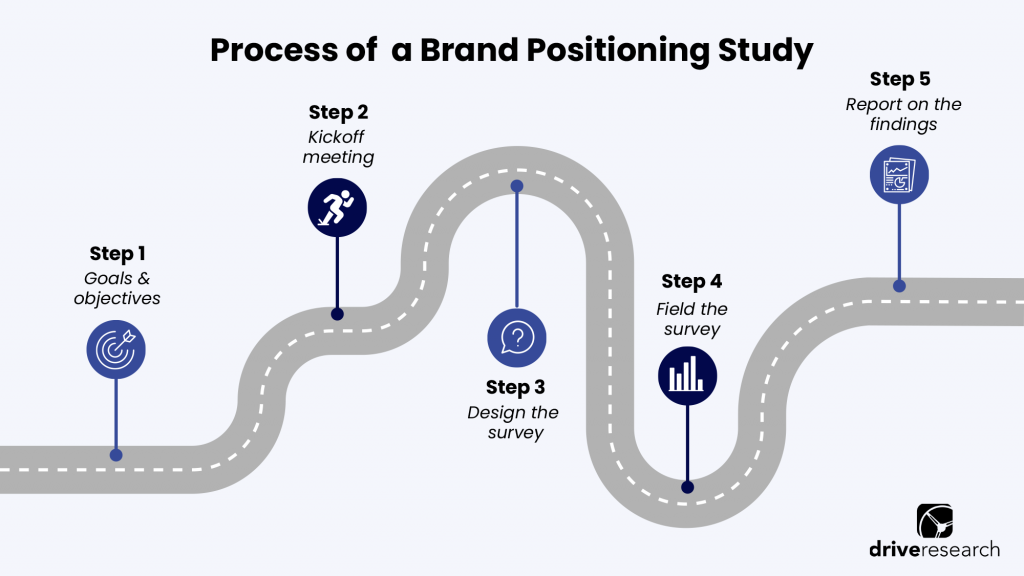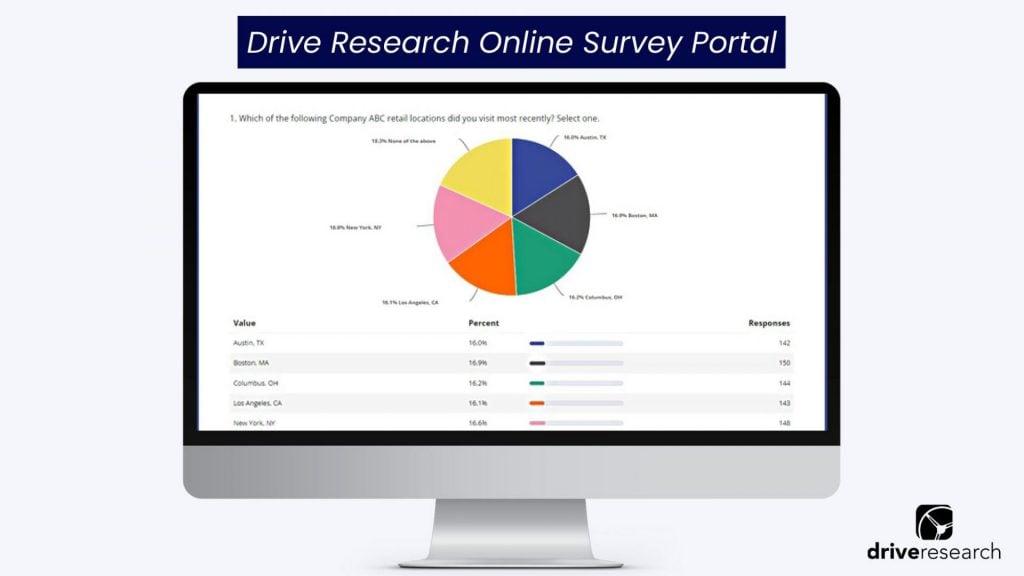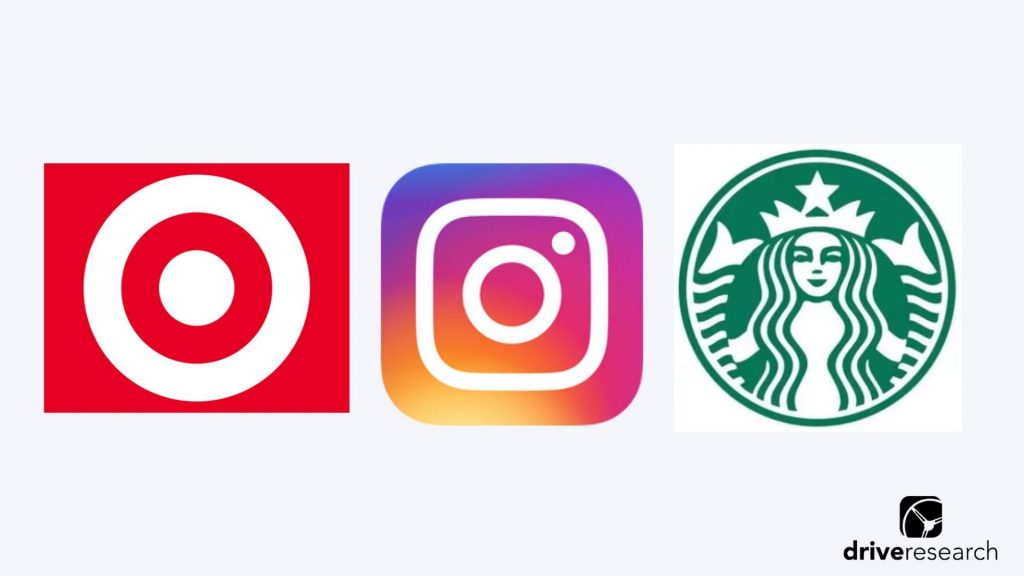
Brand positioning is more than just sending emails and texts to try to increase interaction with consumers.
In fact, research shows that 81 percent of consumers need to trust a brand to consider buying from it.
Even though many think of companies as just products/services, it’s really important to understand which customers are looking for more from brands and which are looking for an easy translation.
All of this and more come into play when trying to measure and improve brand positioning.
What is Brand Positioning?
Brand positioning is the culmination of how a brand presents and differentiates itself in the marketplace.
This includes:
- Branding
- Marketing
- Digital marketing efforts
- Social media
- Public relations efforts
- Stores/locations
- Overall market presence
- How consumers feel about your brand in relation to competitors
Each of these components (and more) should work together in order for a brand to provide a unique value to its customers.
The goal is to establish individuality from competitors in the market to encourage people to prefer their brand over others.
Why is Brand Positioning Important?
There are many advantages to measuring brand position. We list a few below.
Understand how customers perceive your brand
More consumers are buying products based on what brands stand for in addition to value/perceived value.
For instance, 88 percent of consumers say authenticity is important when deciding what brands they like and support.

Brand positioning seeks to understand how a particular brand is perceived within the marketplace.
So to that end, understanding brand positioning and how that can be adjusted to better meet the needs of consumers is important to maintaining and growing market share.
Establish a unique position in the marketplace
It’s unlikely that you have no competition. To stand out and break through the noise, it’s imperative your business is unique and resonates with those interested enough to take the next steps.
By measuring brand perception, companies gain clarity about who they are and who they serve. It is a data-driven marketing tactic that helps you understand what makes you different in the eyes of consumers.
Is it price? Is it quality? Is it customer service?
Once you’ve identified that, you’re able to emphasize your differentiators into sales, marketing, and advertising strategies to gain more attention.
Assists with pricing strategies
People are willing to pay more for items that are higher quality and exclusive. Therefore, positioning your brand as one that encompasses these factors, gives you more leeway to increase the cost of your products or services.
Think of a brand like Erewhon. They can get away with charging $17 for a smoothie despite including common ingredients like collagen powder, strawberries, almond milk, coconut cream, and maple syrup.
But, because it was created in partnership with Hailey Beiber and adds an elusive item of hyaluronic acid, more people consider it ‘worth it.’

Image source: Brightly
Types of Brand Positioning Studies
A positioning study is similar to an image and awareness (I&A) or brand equity study. The difference is questions in a positioning study will be tailored for the needs of the brand.
Using data to fuel the next steps with positioning strategy is powerful.
Rather than making assumptions or continuing to do what has worked in the past, research allows marketing and advertising teams to better understand their market of interest.
Below, we’ll briefly cover a few key ways brand positioning can be measured.
1. Surveys and Questionnaires
A common way to measure branding data is through surveys and questionnaires. These methods are a simple way to gather effective customer data surrounding a brand.
Respondents will be asked questions on:
- Brand quality
- Reliability/Consistency
- Customer service
- Overall product value
Again, it’s always a good idea to research your competitors. Rivals play a key role in how you can improve the position of your brand.
2. Brand Tracking Studies
Tracking a brand is a great, longer-term solution to better understand positioning.
These projects focus on gathering details around key brand metrics.
Often, such metrics include…
- Brand awareness
- Brand loyalty
- Brand associations
- Perceived differentiation
Tracking studies like this are especially important, as they measure continued shifts in branding. By understanding these shifts/trends, brands will be able to adjust accordingly.
Take a look at our Ultimate Guide to Brand Tracking for more information on this method.
3. Competitive Analysis
As we’ve touched on, measuring the strengths of your competitors through analysis is a must.
A competitive analysis measures:
- Product offerings
- Pricing
- Target audiences
- Brand messaging and personality
Again, measuring these features will show you how your brand measures up to rival companies. This data can be used to strengthen (or do away with) current strategies.
4. Social Media Monitoring
Social media plays a huge role in brand marketing.
With so much of the population on some form of social media, it’s a must for any business. At this point, roughly 77% of brands use social media to market their offerings.
Conducting market research around a brand’s social media will help target:
- Trends
- Sentiment analysis
- Ongoing brand discussions
This research also takes a look at mentions and comments about a brand. A brand’s image on social media is huge, and gathering data on this will help with strategizing.
5. Customer Feedback and Reviews
A brand is nothing without the support of customers.
Customer reviews alone can boost or bring down a brand–and fast. Up to 94% of customers have credited poor reviews as preventing them from interacting with a business.
Measuring customer feedback can be done via:
- Customer surveys
- Online review platforms
- One-on-one interactions
Once a brand is aware of customer viewpoints, it can improve outreach methods.
Our short video goes over the right questions to ask in a customer survey:
How to Measure Brand Positioning?
A great way to understand the positioning of your brand is with market research.
That’s because market research can improve your brand by gathering data and information to provide accurate and unbiased insights that help improve decision-making and ultimately win more market share.
Here are some core brand positioning metrics brands typically seek to measure:
- Unaided awareness
- Aided awareness
- Perception
- Drivers to perception
- Word associations
- Usage of a brand in comparison to competitors
- Demographic insight
- And more
However, not all studies are the same. They will vary from industry to industry and brand to brand.
While these metrics are the common components of brand positioning, it’s important to understand that they can be customized based on the unique goals of the market research.
With that being said, here are the five common steps included in a brand positioning study.

1. Determining your goals and objectives
Before any market research study, it is always important to have clearly defined goals and objectives. In the case of brand positioning, these often include measuring, identifying, and improving brand metrics with key stakeholders.
For that reason, brand positioning studies often include surveying the following audience:
- Customers
- Non-customers or target buyers
- Employees
- Company executives and/or investors
We discuss each of these further in our blog, 4 critical audiences for brand positioning surveys.
If completing the project with an outsourced team, this is the stage where you’ll want to contact market research companies, like Drive Research for a quote or proposal.
Our research team will work with you to understand the goals and objectives of the research. We will also explain how the process works, the timeline, as well as costs.
2. Kickoff meeting
During the kickoff of a brand positioning survey, the research team will confirm the goals and objectives of the research as well as the overall scope of work.
A few questions used to help guide this conversation include asking how interest in the brand positioning survey started and how the results will be used.
3. Designing the brand positioning survey
Then, the research team will design a brand positioning survey using best practices and the goals/objectives discussed in the kickoff meeting.
This process can include as much back-and-forth as needed from the client team to ensure teams are aligned on the questions before proceeding to fieldwork.
4. Fieldwork:
After the survey has been sign-off on by the client team, the research team will begin collecting responses.
Depending on the scope of the research the time needed to collect responses may vary from 1 to 3 weeks.
However, as part of your project with Drive Research, you will receive access to a client portal. Here you will see live survey responses as soon as they come in to start seeing where the data is landing.

Use this interactive link to preview our client survey portal
5. Analysis and reporting
Once fieldwork is completed, the research team will begin analyzing the survey while keeping the goals and objectives in mind. The results are then compiled into a report for the client.
We’ve only just scratched the surface of this process. For more information, read our blog post What is a Brand Positioning Study in Market Research?
Examples of Companies with Good Brand Positioning
When thinking of brands with particularly good brand positioning, consider ones that have become ingrained in our minds as the actual product/service they are selling.
For instance, rather than asking for a tissue, it’s common to ask for a Kleenex. Or, rather than asking for a sticky note, many people ask for a post-it.
And I bet you know what brands these logos belong to without even seeing the name.

Here are a few examples of companies with excellent brand positioning:
- Coca Cola. They are more than just a soda brand. The beverages they offer are often associated with nostalgia and providing joy into peoples’ lives.
- Tesla. The luxury electric car brand’s tagline says it all: “The only stylish car that can go from 0 to 100 in 3 seconds without a drop of oil.”
- Starbucks. With Starbuck’s market research strategy, they have successfully selected the pillars that make them the biggest coffee brand in the world: convenience, variety, and customer experience.
- Trader Joe’s. This grocery store differentiates itself from other retailers by positioning itself as a tight-knit corner store shopping experience.
- Nike. The brand has evolved from just selling shoes to a one-stop shop for athletic wear, equipment, and more.
All of these brands are so well positioned in the market that the brand name has essentially become a noun for the product/service offered.
Of course, strong brand awareness isn’t the only piece of the brand positioning puzzle, but it is a core metric.
Final Thoughts
So, how does a brand successfully market itself?
There’s no singular answer to this question. Instead, there are several brand positioning steps companies can take to improve their messaging and overall public image.
By using surveys and additional market research tools, businesses can learn more about the impact of their brand.
Impact aside, positioning research also allows marketers to have a better grasp of their outreach strategies. Is there an aspect of the messaging that just isn’t hitting the audience? What’s more, are branding efforts hitting the wrong audience?
These are just a few insights companies can learn from investing in market research for their brand.
Measure Brand Positioning with Drive Research
Drive Research is a national market research company. Our team helps organizations around the globe with brand positioning research to help fuel strategic decisions.
Interested in learning more about our market research services? Reach out today.



